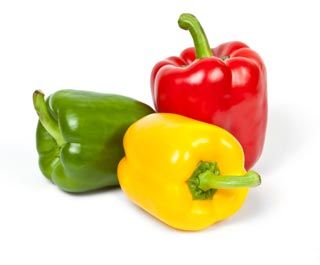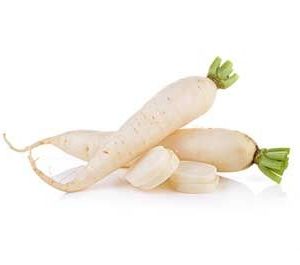Bell peppers are some of the most versatile vegetables available, no matter where you go in the world. They make a delicious sauté with onions, and can be added to salads, soups and casseroles. They can also be stuffed, lightly grilled, added to a simple and delicious dip or simply sliced for a fresh, flavorful and crunchy snack.
Compared to other peppers, bell peppers aren’t known for a high level of spiciness. Red bell peppers tend to be sweeter, as are some yellow and orange varieties.
The heat intensity of peppers is measured in Scoville heat units (SHU). Green, yellow or red bell peppers score a zero on the scale, jalapeño peppers have around 3,500 to 8,000 and habañeros reach 150,000 to 300,000 units. There are also other peppers you can include in your dishes for both flavor and color, such as banana, shishito, cayenne and serrano.
Health Benefits of Bell Peppers
Bell peppers have a fair share of health-boosting vitamins and minerals. Regular consumption of vitamin C-rich foods, like bell peppers (which may contain more than twice the vitamin C of an orange) may help protect your body against scurvy, boost the immune system, decrease inflammation, reduce risk for heart disease and scavenge harmful free radicals in the body.
Other health benefits of bell peppers come from nutrients like thiamin (vitamin B1), niacin (vitamin B3), folate, magnesium and potassium.
A study published in the Journal of Food Composition and Analysis showed that vitamin K, which is abundant in bell peppers, may help synthesize some proteins that may positively affect blood coagulation. Vitamin K may also play a role in protecting your bones against osteoporosis. People with reduced bone density have lower levels of this nutrient. Interestingly enough, sautéed peppers contain higher amounts of vitamin K than raw peppers.
While bell peppers’ health benefits are numerous, it’s important to note that they’re part of the nightshade plant family along with eggplants and potatoes, and contain high amounts of lectins. These are plant proteins that can attach to cell membranes.
Lectins are antinutrients that can resist digestion, cause negative shifts in the balance of your gut bacteria, trigger inflammation, increase your risk for abnormal clotting and potentially predispose you to leptin resistance. However, you can reduce the lectin content in bell peppers by removing their seeds and washing prior to cooking, since these antinutrients tend to be concentrated in the seeds or skin of fruits and vegetables.
To learn more about the other potential nutrients found in sweet red bell peppers (one of the most used varieties of this vegetable), you can check out the table below:
| Sweet Red Pepper Nutrition Facts
Serving Size: 100 grams, raw |
||
| Amt. Per Serving |
% Daily Value* |
|
| Calories | 26 | |
| Calories from Fat | 0 | |
| Total Fat | 0.30 g | |
| Saturated Fat | 0.059 g | |
| Trans Fat | 0 g | |
| Cholesterol | 0 mg | |
| Sodium | 4 mg | |
| Total Carbohydrates | 6.03 g | |
| Dietary Fiber | 2.1 g | |
| Sugar | 4.20 g | |
| Protein | 0.99 g | |
| Vitamin A157 µg | Vitamin C | 127.7 mg |
| Calcium7 mg | Iron | 0.43 mg |
Studies Done on Bell Peppers
Authors of a study published in the Food, Agriculture and Environment journal conducted a thorough examination on green, red and yellow bell peppers to discover the nutrients found in these vegetables. All peppers examined contained phenolic compounds, ascorbic acid and carotenoids, while delivering free radical-scavenging activity.
Green peppers showed the highest phenolic activity, but had less carotenoids than red and yellow varieties, and less ascorbic acid compared to red peppers. Speaking of red peppers, this was found to have the most ascorbic acid content, as well as a higher level of free radical-scavenging activity.
Meanwhile, a study in Prostate Cancer and Prostatic Diseases journal highlighted the possible link between vitamin C-rich food intake, particularly green peppers, and a lowered risk of prostate cancer.
Researchers conducted initial studies plus 12.7 years of follow up on men exposed to high amounts of asbestos in Australia. Men who consumed more bell peppers and broccoli in their diet had a lower risk for prostate cancer. The authors highlighted that the nutrients lycopene, beta-carotene, vitamins E, C and A, and retinoids in bell peppers may have played a role in promoting this effect.
Bell Pepper Fun Facts
Peppers belong to the Solanaceae or nightshade family, a wide-ranging species with more than 2,000 types of plants, some of them edible, ornamental, medicinal and poisonous. In particular, bell peppers are related to tomato, potato, eggplant, tobacco and petunia.
Summary
The bell pepper is an extremely versatile vegetable that can be used in hundreds of meals. While they may be milder in flavor, brightly colored bell peppers can add a dimension to dishes that would otherwise be bland and colorless. They’re good for you, too, as they offer vitamins A, C and K, thiamin, niacin, folate, potassium and magnesium. While bell peppers vary somewhat in the health benefits they provide, there’s no question that they’re well worth trying. You can experiment with different varieties to savor their flavors, and feel good while doing it.







Reviews
There are no reviews yet.